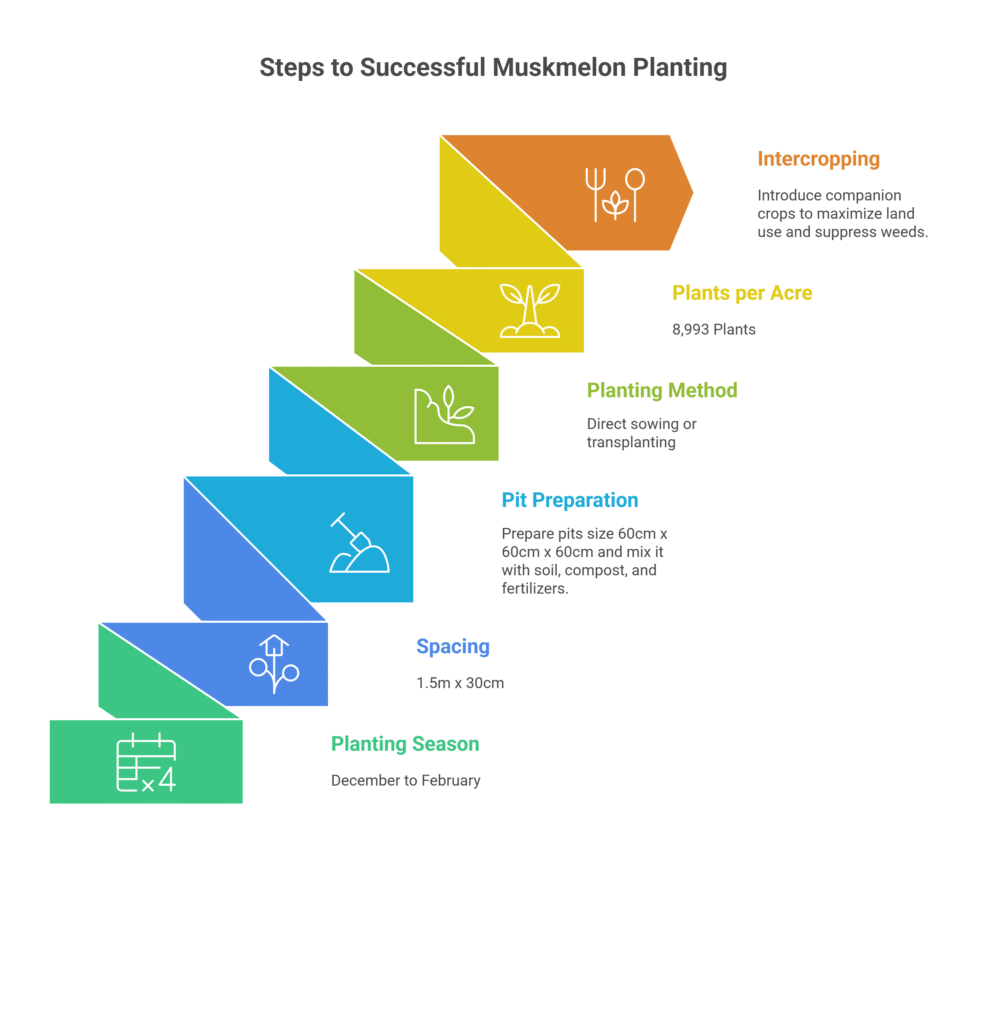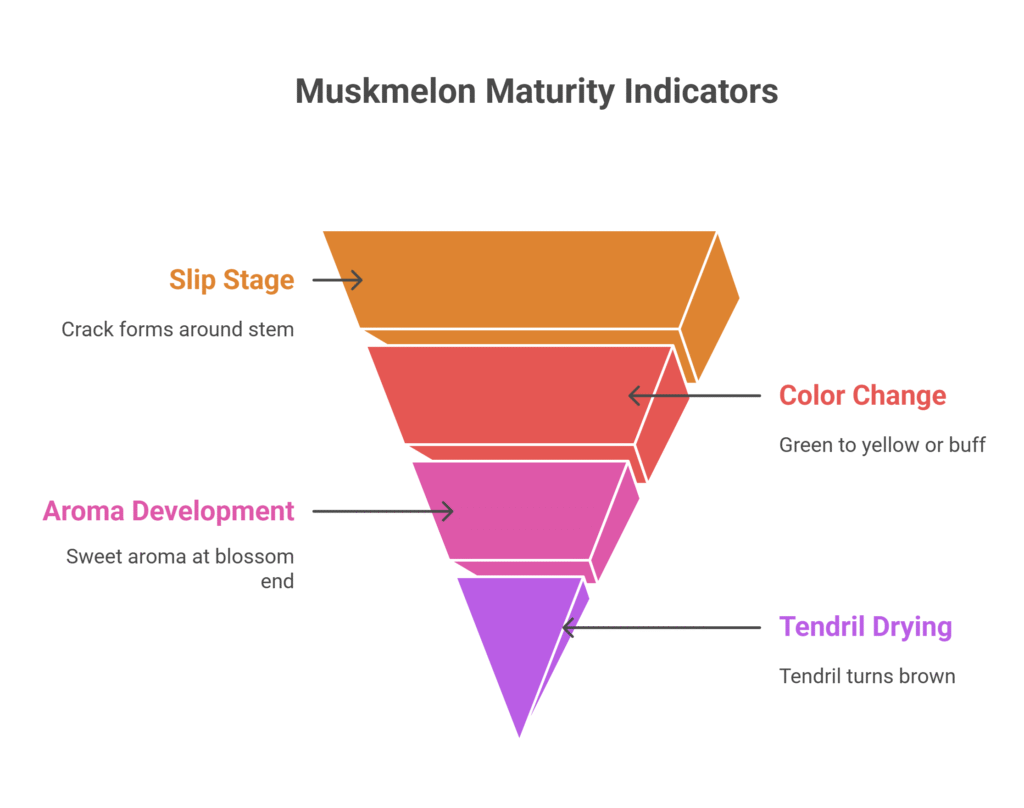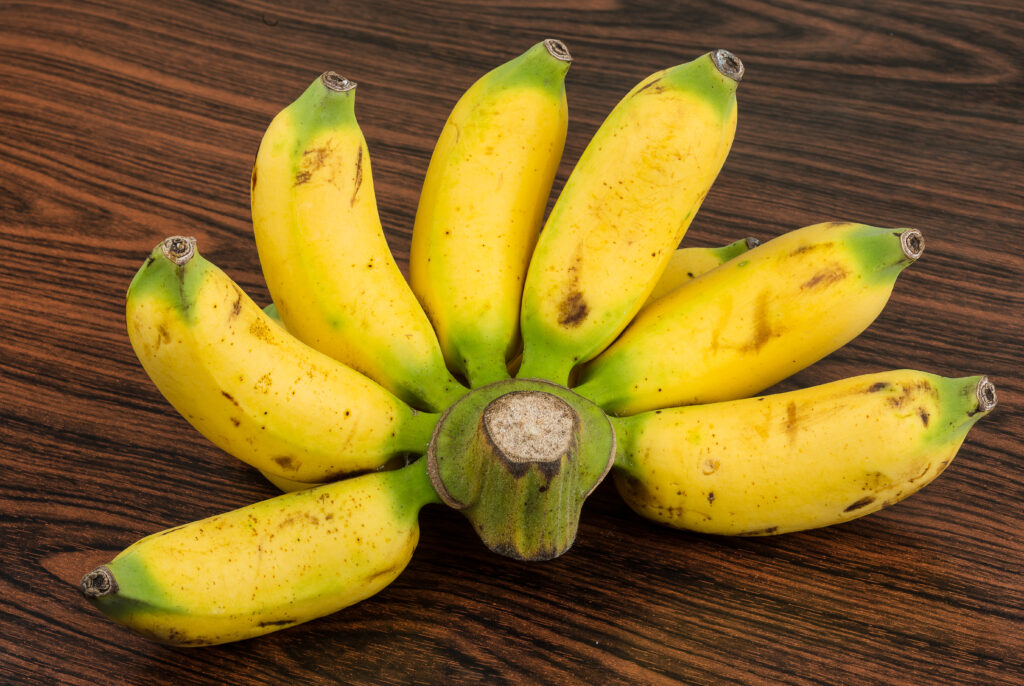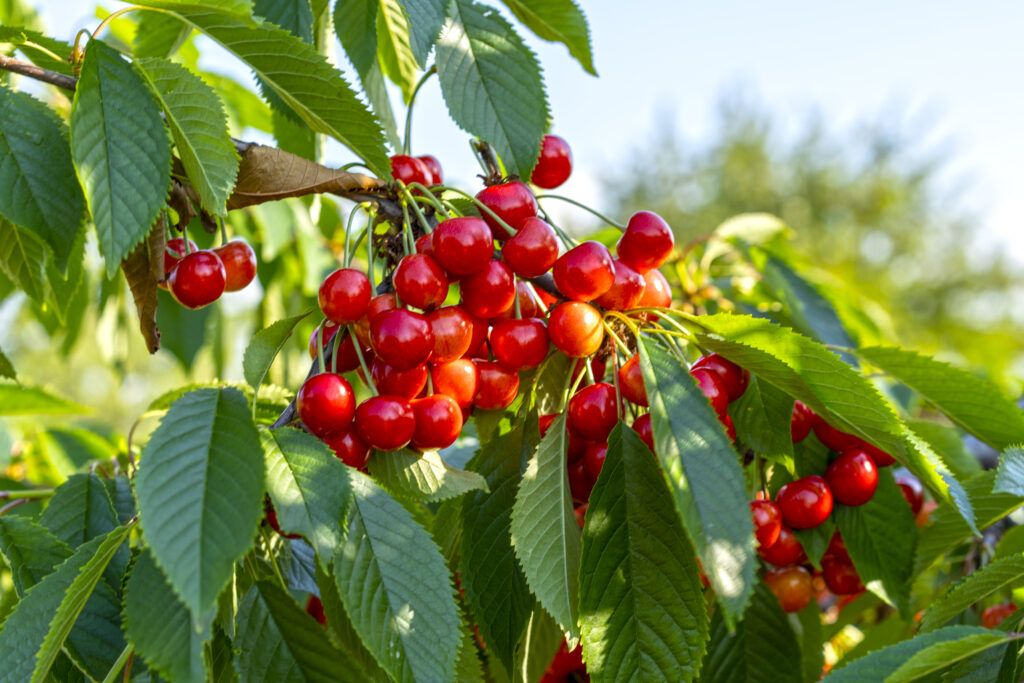Muskmelon Farming
Muskmelon farming has emerged as a highly profitable venture for many growers, particularly when managed with proper agronomic practices and market planning. An analysis of muskmelon farming profit per acre reveals encouraging financial returns. With a total investment of NRs 73,000 per acre and a gross income of NRs 240,000, farmers can achieve a net profit of NRs 167,000.
This translates to a profit margin and return on investment (ROI) of approximately 228.8%, highlighting the strong economic potential of the crop. Furthermore, the cost-to-income ratio is 0.304, which means that for every 1 NRs spent, farmers earn about 3.28 NRs. These figures demonstrate the substantial profitability and economic viability of muskmelon cultivation on a per-acre basis.
Land Preparation
Land preparation begins with 1–2 deep plowings (20–25 cm) using a moldboard plow to break hardpans, improve aeration, and promote better root penetration. This is followed by 3–4 cross harrowings to break down soil clods, incorporate crop residues and weeds, and achieve a fine, level tilth that supports uniform irrigation.
Raised beds or ridges and furrows are then formed, with ridges spaced 1.5–2 meters apart and raised 15–20 cm, or raised beds made 1.2–1.5 meters wide and 15–20 cm high, separated by irrigation channels. During the final harrowing or puddling, 15–20 tons per acre of well-decomposed farmyard manure or compost is evenly incorporated as basal manure.
Soil Type
Muskmelon grows best in deep, fertile, sandy loam or loamy soils with good drainage, as it is highly vulnerable to waterlogging, which can lead to fungal infections and root rot. Heavy clay soils should be avoided unless properly amended. For optimal growth, the soil pH should be slightly acidic to neutral, ranging from 6.0 to 7.0; soils outside this range may require sulfur or sphagnum peat to correct alkalinity or lime to correct acidity. Additionally, high organic matter content improves soil structure, enhances nutrient availability, and increases water retention, all of which support vigorous plant growth.
Climatic Requirements
Muskmelon requires warm temperatures for optimal growth, germinating best between 25–30°C (min 18°C), thriving with daytime temperatures of 25–35°C and nights of 18–24°C, and needing warm, sunny days (27–35°C) with cooler nights for fruit development and ripening. It is highly frost-sensitive, killed near 0°C, and temperatures above 35°C during flowering can hinder pollination.
Full sun (6–8 hours daily) is essential for healthy growth, flowering, fruit set, and sugar accumulation. The crop prefers moderate to low humidity to avoid foliar diseases and fruit rots; while it can tolerate moderate rainfall, excess moisture during flowering and fruiting is damaging, making drip irrigation under plastic mulch the preferred water management method.
Major Cultivars
| Cultivar Type | Key Characteristics | Example Varieties | |
| Cantaloupe | Netted rind, orange flesh, strong aroma | Hales Best, PMR 45, Edisto 47, Top Score | |
| Muskmelon | Often synonymous with Cantaloupe (US); netted rind, sweet flesh | Pride of Wisconsin, Netted Gem | |
| Honeydew | Smooth creamy-white/green rind, pale green sweet flesh | Honey Brew, Honey Star, Green Flesh | |
| Galia | Netted rind (like cantaloupe), green flesh (like honeydew), very aromatic | Galia, Passport | |
| Charentais | Small; smooth grey-green rind with deep sutures; vibrant orange flesh, intense aroma | (No specific examples listed) | |
| Asian Varieties | Diverse types; crisp white/pale green flesh | Korean Melons, Yubari King (Japanese), Snake melons | |
| Hybrids | Commercially dominant; disease resistance, uniformity, high yield & quality | Sun Lady, Athena, Sugar Cube, Divergent | |
Seed Rate per Acre
The standard seed rate for muskmelon is approximately 400 grams per acre, and seeds should be treated before sowing with Trichoderma viride at 4 g/kg, Pseudomonas fluorescens at 10 g/kg, or carbendazim at 2 g/kg to protect against soil-borne diseases and promote healthy seedling establishment.
Nursery Management
Muskmelon seedlings can be raised either in 200-gauge polythene bags measuring 10 cm in diameter and 15 cm in height or in protrays under a protected nursery environment. Protrays with 98 cells are ideal for uniform seedling development. Seedlings are typically ready for transplanting into the main field when they are about 12 days old.
Planting
a). Planting Season
In tropical and subtropical regions, muskmelon is commonly cultivated during the Rabi season (December to February), with the optimum sowing time being around mid-February.

b). Spacing
Muskmelon should be planted with a spacing of 1.5 meters between rows and 30 cm between plants within each row, following a raised bed single row system with these precise measurements.
c). Pit Preparation
The prepared ridges or beds should have pits dug at the designated spacing points; these pits should normally be 30 cm by 30 cm by 30 cm. Next, a combination of topsoil, 2-3 kg of compost or well-decomposed farmyard manure, 100-150 grams of bone meal or SSP, 25-50 grams of a balanced NPK fertilizer (e.g., 10:10:10), and 25 grams of Trichoderma viride are added to each pit. To get the soil ready for transplanting, mix this mixture well and water the pits a few days prior to planting.
d). Planting Method
Irrigation laterals should be positioned in the middle of each raised bed, which should be prepared with a width of 120 cm and separated by 30 cm. Muskmelon can be established by direct sowing or transplanting, with a single row system in the raised bed with a 1.5-meter gap between rows along the laterals and 30 cm between plants. When planting, ropes spaced 30 cm apart are used to guarantee precise spacing.
For direct seeding, place 2–3 seeds per pit about 2–3 cm (1 inch) deep and thin to the strongest seedling per pit once true leaves emerge.
For better establishment and an earlier harvest, transplanting is recommended. Before being transplanted, seedlings are hardened off for three to five days after being nurtured in trays or cups for three to four weeks until they have two to three true leaves. Make sure the root ball is still in place and the soil level is in line with the seedling stem when you carefully relocate seedlings into pits that have been previously watered. After transplanting, water right away.
e). Number of Plants per Acre
Approximately 8,993 muskmelon plants can be grown per acre if rows are spaced 1.5 meters apart and plants are 30 cm apart inside each row.
Intercropping
Intercropping in muskmelon cultivation is best done with short duration, upright, non-cucurbit crops planted between the widely spaced melon rows. Suitable companions include vegetables like onion, garlic, radish, leafy greens (such as spinach and early-stage lettuce), and bush beans, as well as legumes like cowpea and black gram (urd).
This practice helps maximize land use, offers additional income, and can suppress early weed growth. However, intercrops must be harvested before muskmelon vines spread fully, typically within 45–60 days, and care should be taken to avoid shading the melon plants. Other cucurbits like cucumber, squash, and watermelon should be avoided due to common pests, diseases, and competition. It is also essential to ensure that the nutrient and water requirements of intercrops do not conflict with those of muskmelon.
Irrigation
Irrigation plays a vital role in muskmelon cultivation, particularly during critical growth stages such as germination, seedling establishment, flowering, fruit set, and early fruit development.
In the early stages, it’s important to apply light but frequent irrigation every 3–4 days during hot weather to maintain adequate moisture in the root zone without causing waterlogging. As the plants progress to vine growth and flowering, watering can be done less frequently—about every 5–7 days—ensuring the soil remains moderately moist.
Consistent soil moisture is essential during fruit development, as any stress at this stage can result in cracked or undersized fruits. However, as the fruits near maturity—especially in the final 1–2 weeks before harvest—watering should be reduced significantly or stopped. This practice helps to concentrate sugars, improve sweetness (Brix level), and prevent issues like fruit splitting or diluted flavor. Overwatering near harvest often leads to tasteless fruits.
Drip irrigation is the preferred method due to its efficiency in conserving water, reducing leaf wetness (which lowers the risk of disease), and enabling precise fertilizer application. It works especially well with plastic mulch. In areas without drip systems, furrow irrigation is an alternative, but care should be taken not to flood the plant crowns and to maintain proper drainage.
The use of overhead sprinklers is discouraged, as they increase the chances of foliar diseases and can negatively affect fruit quality.
Fertilizer and Manure
Soil testing is essential for making accurate nutrient recommendations, as fertilizer application rates can vary greatly depending on soil fertility levels and the desired yield targets.
| Stage | Application Type | Nutrient/Product | Rate/Amount |
| Basal Application (During Land Prep/Pit Filling) | FYM/Compost | – | 15-20 tons/acre |
| Biofertilizers | Azospirillum | 800g/acre | |
| PSB (Phosphate Solubilizing Bacteria) | 800g/acre | ||
| Potash Mobilizing Bacteria | 800g/acre | ||
| Phosphorus (P₂O₅) | e.g., SSP | 50-60 kg/acre (300-350 kg SSP) | |
| Potash (K₂O) | e.g., MOP | 40-50 kg/acre (65-80 kg MOP) | |
| Nitrogen (N) | e.g., Urea (portion applied) | 25-30 kg/acre (50-60 kg Urea) | |
| Top Dressing (3-4 weeks after planting, Vine Running) | Nitrogen (N) | e.g., Urea | 30-40 kg N/acre (65-85 kg Urea) |
| Top Dressing (6-7 weeks after planting, Flower Initiation/Fruit Set) | Nitrogen (N) | e.g., Urea | 20-30 kg N/acre (45-65 kg Urea) |
| Potash (K₂O) | e.g., MOP | 20 kg K₂O/acre (35 kg MOP) | |
| At Flowering | Foliar Spray | NPK – 0:52:34 | 3g/liter water |
| At Fruit Set Stage | Foliar Spray | NPK – 0:0:50 | 3g/liter water |
Weed Control
Weed control in muskmelon is most critical during the first 4–6 weeks after planting, until the vines spread and cover the ground. Effective methods include cultural practices like encouraging dense vine growth and applying plastic or organic mulch to suppress weeds.
Mechanical control involves shallow hoeing between rows and hand weeding around plants, avoiding deep cultivation to prevent root damage. Chemical control can include careful use of pre-emergence herbicides such as Pendimethalin before weed seeds germinate, strictly following label guidelines for crop safety, dosage, and timing.
However, post-emergence herbicide options are very limited in muskmelon, and the use of plastic mulch significantly reduces the overall need for herbicides.
Flowering and Fruit Management
Flowering
As a monoecious plant, muskmelon bears distinct male and female blooms on the same plant. Because bees are essential to pollination, fruits that are not properly pollinated may be malformed. Insecticides that hurt bees should not be used during the flowering season in order to maintain efficient pollination.

Fruit Set
The first few female flowers typically produce the best-quality fruits. Later flower sets may lead to smaller fruits or poor maturity, so early flower sets are more desirable for marketable yields.
Pruning and Training
Vine pruning is an optional but beneficial practice. Pinching the main vine tip after 4–6 true leaves encourages lateral branching, where most female flowers appear. Overly vegetative laterals can be selectively pruned. Training the vines using trellises—either vertical or A-frame—enhances air circulation, reduces disease risk, keeps fruits clean, and allows for closer spacing. Trellising is especially important for high-value cultivars grown in protected environments, although it requires additional labor.
Fruit Thinning
Thinning should be done early when fruits are marble-sized. Remove misshapen, diseased, or excess fruits and retain only 3–5 well-spaced, healthy fruits per plant depending on vine vigor. This practice improves fruit size and quality while preventing vine exhaustion.
Fruit Support
For trellised plants, it’s essential to support developing fruits with nets or slings to prevent breakage and ensure proper development.
Pest and Disease Management
Common Pests
a). Sucking Pests
Aphids, whiteflies, thrips, and leafhoppers are examples of sucking pests that are a serious hazard to crops because they spread viral illnesses in addition to feeding on plant sap. An integrated approach is necessary for effective management. Eco-friendly solutions for early infestations include insecticidal soap (5 ml/liter) and neem oil (2–3 ml/liter of water).
Sprays containing pyrethrin (0.5–1 ml/liter) have a rapid knockdown effect, but they should be handled carefully to prevent damaging beneficial insects. Long-term control of severe infestations can be achieved by using targeted systemic insecticides, such as imidacloprid, at a dosage of 0.3–0.5 ml/liter of water as a foliar spray or 1-2 ml/liter for soil soaking. To guarantee crop safety and environmental preservation, always adhere to label directions and observe pre-harvest intervals.
b). Chewing Pests
Chewing pests like cucumber beetles, fruit flies, armyworms, and cutworms damage muskmelon crops by feeding on plant parts and spreading diseases. Control measures include pheromone or sticky traps, insect netting, and biological sprays like Spinosad (1–1.5 ml/liter). For severe infestations, targeted insecticides such as Lambda-Cyhalothrin (0.5 ml/liter) or Chlorantraniliprole (0.4 ml/liter) can be used. Always follow label instructions and protect pollinators.
c). Mites
Spider mites are common in hot, dry conditions and typically infest the undersides of leaves, causing yellowing, speckling, and leaf drop, which can significantly reduce crop yield and quality. Early infestations can often be managed by forceful water sprays targeting the lower leaf surfaces to dislodge the mites. For more severe cases, miticides like Abamectin (1 ml/liter) or Spiromesifen (1–1.25 ml/liter) offer effective control. To avoid resistance, it’s important to rotate miticides and ensure thorough coverage, especially on the undersides of leaves. Always follow label directions and observe necessary safety measures.
Common Diseases
a). Fungal
Fungal diseases such as powdery mildew (white powdery growth on leaves), downy mildew (yellow leaf spots with purplish mold underneath), fusarium wilt (wilting, yellowing, and browning of vascular tissue), gummy stem blight (dark lesions on stems and leaves), and anthracnose (sunken spots on fruits and foliage) can severely affect muskmelon crops. Effective management includes using disease-resistant varieties, practicing crop rotation, and avoiding overhead irrigation to reduce humidity on foliage.
Fungicidal treatments are essential, especially during favorable conditions for disease development. Water soluble sulfur (2–3 g/liter) is effective for powdery mildew, broad-spectrum protectants like Chlorothalonil (2–2.5 g/liter) help prevent multiple fungal infections.
Systemic fungicides such as Azoxystrobin (1 ml/liter) provide curative and protective action, particularly against downy mildew and anthracnose. Rotating fungicides with different modes of action is critical to prevent resistance. Always follow label instructions and apply at recommended intervals for effective and safe disease control.
b). Bacterial wilt
Cucumber beetles are the primary vectors of bacterial wilt in muskmelon, which is caused by Erwinia tracheiphila and causes abrupt wilting and plant collapse. Monitoring instruments like as yellow sticky traps and pesticides like imidacloprid, applied at a rate of 0.3 to 0.5 ml/liter as a foliar spray or 1 to 2 ml/liter for soil drenching, are essential for effective management of the beetle population. In order to stop the spread of the infection, infected plants should be removed and killed as away.
c). Viral
Mosaic viruses like CMV and WMV cause stunted growth and mottled, distorted leaves in muskmelon plants. Since these viruses are spread by aphids and whiteflies, controlling these vectors using insecticides like Imidacloprid (0.3–0.5 ml/liter) is essential. Infected plants should be removed immediately, and planting virus-resistant varieties is recommended for long-term management.
Harvesting
Maturity Indicators
Harvesting muskmelon at the proper maturity stage is essential for achieving the best flavor and market quality. In netted varieties like cantaloupe, the most reliable sign is the slip stage—when a full crack forms around the stem, and the fruit detaches easily with slight pressure.

Visual and Sensory Cues
Additional indicators of ripeness include a change in the background color—from green or grey to yellow or buff in cantaloupes, and from green to creamy white or yellow in smooth-skinned types like honeydew. A strong, sweet aroma develops at the blossom end, and the netting becomes coarse and raised, while smooth varieties develop a waxy feel.
Physical Signs
The fruit is ready for harvesting when the bloom end softens a little and the tendril nearest the fruit stem dries out and turns brown.
Harvesting Method
The harvesting method involves cutting the stem 1-2 cm above the fruit crown with a sharp knife or pruning shears. Fruit that has been pulled or twisted may get damaged and lose quality.
Timing and Frequency
Fruits should be harvested early in the morning when they are cool to preserve freshness. Continue harvesting every 2–3 days as more fruits reach maturity.
Yield
The typical yield of muskmelon ranges from 8,000 to 10,000 kg per acre under proper cultivation practices.
Cost of Investment per Acre for Muskmelon
| S.N. | Category | Cost (NRs) |
| 1 | Land Preparation (plowing) | 15,000 |
| 2 | Seed cost | 3,000 |
| 3 | Nursery management | 3,000 |
| 4 | Transplanting | 5,000 |
| 5 | Mulching | 10,000 |
| 6 | Fertilizers and Manure | 10,000 |
| 7 | Irrigation | 8,000 |
| 8 | Weed Control (pre & post-emergence) | 4,000 |
| 9 | Pest & Disease Control | 6,000 |
| 10 | Harvesting | 4,000 |
| 11 | Miscellaneous Costs | 5,000 |
| Total Cost | 73,000 |
Income per acre for Muskmelon Farming
| Particular | Estimated Yield (kg) | Market Price (NRs/kg) | Total Income (NRs) |
| Muskmelon Yield | 8,000 | 30 | 240,000 |
Analysis of Muskmelon Farming Profit Per Acre
The total cost of production is NRs 73,000, while the total income amounts to NRs 240,000, resulting in a net profit of NRs 167,000. The profitability analysis shows a high profit margin and returns on investment (ROI), both calculated at approximately 228.8%, indicating significant returns relative to the cost. The cost-to-income ratio stands at 0.304, meaning every 1 NRs invested yields around 3.28 NRs in income.
Crop Calendar for Muskmelon Farming (Tropical/Subtropical Regions)
Based on Rabi Season Planting (Mid-February)
| Month | Growth Stage | Key Activities | Duration/Timing |
| December | Land Preparation | · Deep plowing (1–2 passes, 20–25 cm depth) · Harrowing (3–4 cross passes for fine tilth) · Bed formation: Raised beds (1.2–1.5 m wide, 15–20 cm high) or ridges (1.5–2 m apart). | Early–mid December |
| January | Soil Enrichment | · Basal manure: Incorporate 15–20 tons/acre FYM/compost during final harrowing. · Pit preparation: Mix soil + compost + basal fertilizers (SSP, MOP, urea) + biofertilizers. | Late December–mid January |
| Early February | Nursery Sowing | · Seed treatment: Treat seeds with Trichoderma/Pseudomonas/carbendazim. · Sow in protrays/polybags under protected nursery. | 10–12 days before transplanting |
| Mid-February | Transplanting | · Transplant 12-day-old seedlings (2–3 true leaves) into pits. · Spacing: 1.5 m between rows, 30 cm between plants (8,993 plants/acre). · Irrigation: Immediate light watering post-transplant. | Optimal window: 15–20 February |
| Late Feb–Early March | Early Vegetative | · Light irrigation every 3–4 days. · Weed control: Apply mulch; manual weeding. · Pest monitoring: Check aphids/whiteflies. | Weeks 1–3 after planting |
| Mid–Late March | Vine Running | · Top dressing 1: Apply 30–40 kg N/acre (65–85 kg urea). · Pruning: Pinch main vine tip after 4–6 leaves. · Intercropping: Plant onion/radish/spinach (harvest by 45–60 days). | 3–4 weeks after planting |
| April | Flowering & Fruit Set | · Top dressing 2: Apply 20–30 kg N/acre + 20 kg K₂O/acre (45–65 kg urea + 35 kg MOP). · Foliar spray: NPK 0:52:34 at flowering; NPK 0:0:50 at fruit set. · Pollination: Ensure bee activity; avoid insecticides. | 6–7 weeks after planting |
| Early–Mid May | Fruit Development | · Irrigation: Consistent moisture (drip preferred). · Fruit thinning: Retain 3–5 fruits/plant (marble-sized). · Pest/disease control: Monitor powdery mildew, fruit flies; apply sprays as needed. | Weeks 8–10 after planting |
| Late May | Ripening & Pre-Harvest | · Reduce irrigation 1–2 weeks pre-harvest. · Check maturity: Slip stage, netting, aroma, tendril drying. | 11–12 weeks after planting |
| June | Harvest | · Harvest every 2–3 days (early morning). · Method: Cut stem 1–2 cm above fruit. · Yield: 8,000–10,000 kg/acre. | 80–100 days after planting (varies by cultivar) |
Sources
Food and Agriculture Organization (FAO)
University of California Agriculture & Natural Resources (UC ANR)
Nepal Agricultural Research Council (NARC)
Punjab Agricultural University (PAU)
Tamil Nadu Agriculture University (TNAU) – Agritech portal
Indian Council of Agricultural Research (ICAR)




Pingback: Green Bean Farming Profit Per Acre -